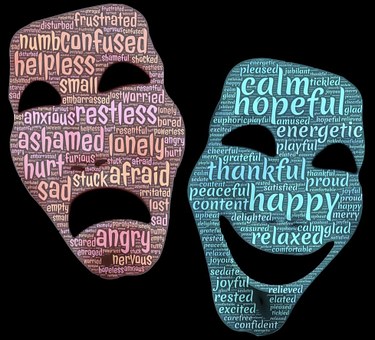
Feeling’s don’t lie
How many times might you have thought – even said – I shouldn’t feel like this?
Most people do, at some point or another. And yet it is a totally invalid statement – if you ‘shouldn’t’ feel like that, then you wouldn’t. Feelings are always there for a reason and we can gain a lot from working out exactly what it is we are feeling and why we are feeling it. It’s not an easy task but a very worthwhile one.
Before you can get started on the task you need to understand a few important ideas…
1. Your feelings will never lie to you. You can lie about them, definitely, but what you feel is what you feel. Some feelings are uncomfortable, but they are simply messages from your subconscious and cannot actually harm you.
2. Don’t beat yourself up if you think that your feelings are ‘bad’ – this will not make them go away and will ultimately make them worse. Feelings are never ‘bad’, they are simply a message from part of your subconscious mind about a reaction to a situation of some sort. Many times, we can resolve those feelings but it will sometimes need the help of a professional therapist.
3. Recognise that you are not the only person in the world who has those feelings. They might be uncomfortable but they are not ‘weird’ or unique. But you can guarantee that everything you feel is felt millions of times around the world. Your subconscious is the same as that of everybody else; it is the same and works the same, and it is from there that your feelings originate.
4. You didn’t *choose* to have those feelings – we can only control what we do with the feelings not their existence. Our feelings come from what we have learnt about ourselves and the world from the moment we were born and you certainly didn’t have any choice over *those* matters!
5. Nobody can *make* you feel anything. Your feelings are *your own* reaction to a given situation. If you have trouble with this concept just think about the number of times that people have *tried* to make you feel something and it hasn’t happened. And if it WERE possible to change somebody’s feelings, do you not think that somebody would have learnt to do just that, to totally control what another thinks and therefore what that other person wants to do? If somebody could do that, negatively OR positively, he or she would be worth a million in no time at all!
6. The most important one: Your feelings deserve respect and total regard. Accept that they are there and that they are valid, even if they are unpleasant.
Next time that you find yourself feeling uncomfortable in some way, make a mental note that you will investigate those feelings as fully as you can and make an appointment with yourself to do just that – and don’t ‘forget’ it! This is all part of giving your feelings total respect. Create some sort of ‘anchor’ that will let you find it again; creating a strong image of where you are as you feel it will normally do it.
Method:
First, read through the 6 rules above, thinking in depth about each one of them, especially number 6. Continue only when you feel the understanding of each rule.
Now sit quietly and focus for a few moments, just as in the beginning of the ‘self focussing’ technique in the last newsletter; just in case you don’t have it to hand, here it is again:
Sit yourself comfortably and just stare for a while, not trying to think of anything in particular; it’s slightly better to stare at a fixed point, though not essential. You might feel relaxed and you might not – it’s not important, either way. After a while (it varies from person to person) you will be aware of some sort of change. It might be that you feel quiet, or that you notice your breathing has slowed down. It might be just that you feel calm and relaxed. What happens is not important – it’s the fact that you have NOTICED that something has changed that is important.
Now, keeping that state, access the feeling that you want to explore and recognise that it is YOUR feeling and is nothing to do with anybody else and can’t affect anybody else. If state of focus changes, then start again; it is essential to remain as consciously calm and detached as possible to allow your subconscious to communicate.
Keep the feeling in your mind/body and don’t try to do anything with it other than that. After a little while (it might only be a moment or two) you will be aware of a thought or an image also in your mind; this is quite inevitable and is a key to the origin of the emotional response that you are getting, even if you do not immediately understand it. Examine the thought or image without criticism or judgement; remember that you didn’t choose it and it’s simply a message from the subconscious. The image or thought might change to something else, perhaps another feeling of some sort, and if it does, just go with it, simply following the train of thought in as much of a detached manner as you can.
Sometimes, everything will just suddenly make sense. At other times, the feeling will simply fade which is a message from your subconscious that you have done enough work as is necessary/possible for the time being. If it returns, you can go through the process again.
Finally, remember to apply those 6 rules to the thoughts and images that your subconscious has given you – and remember, your subconscious GAVE you those thoughts; it did not force them into your mind!
